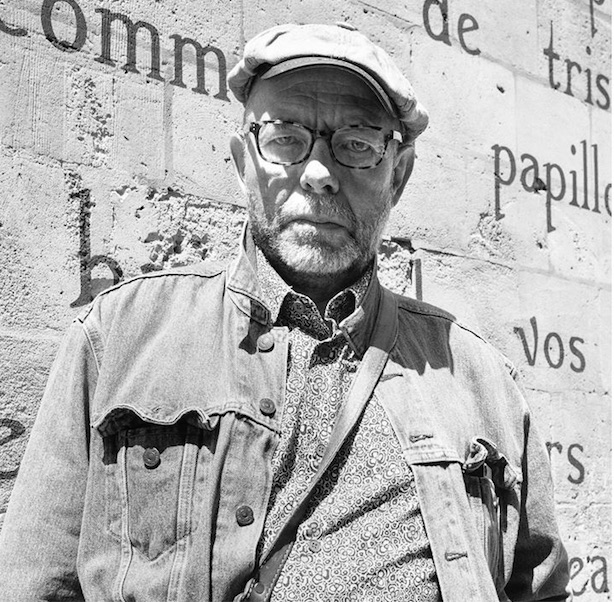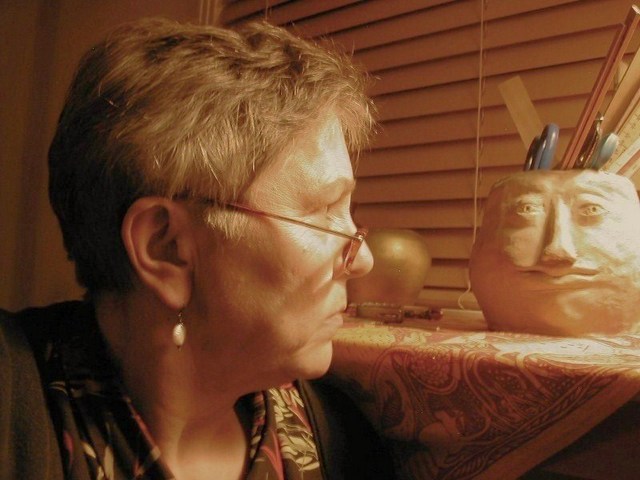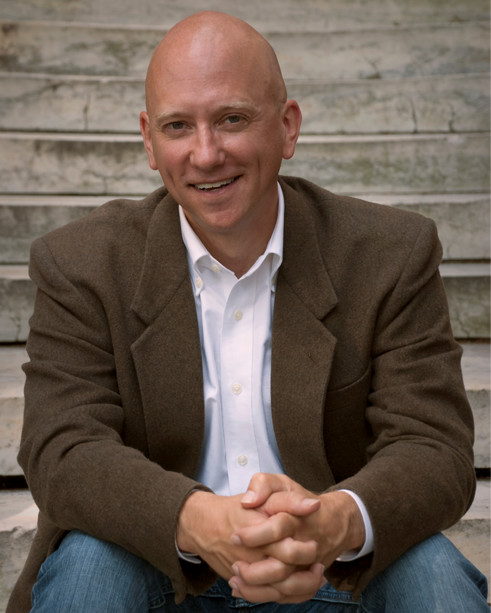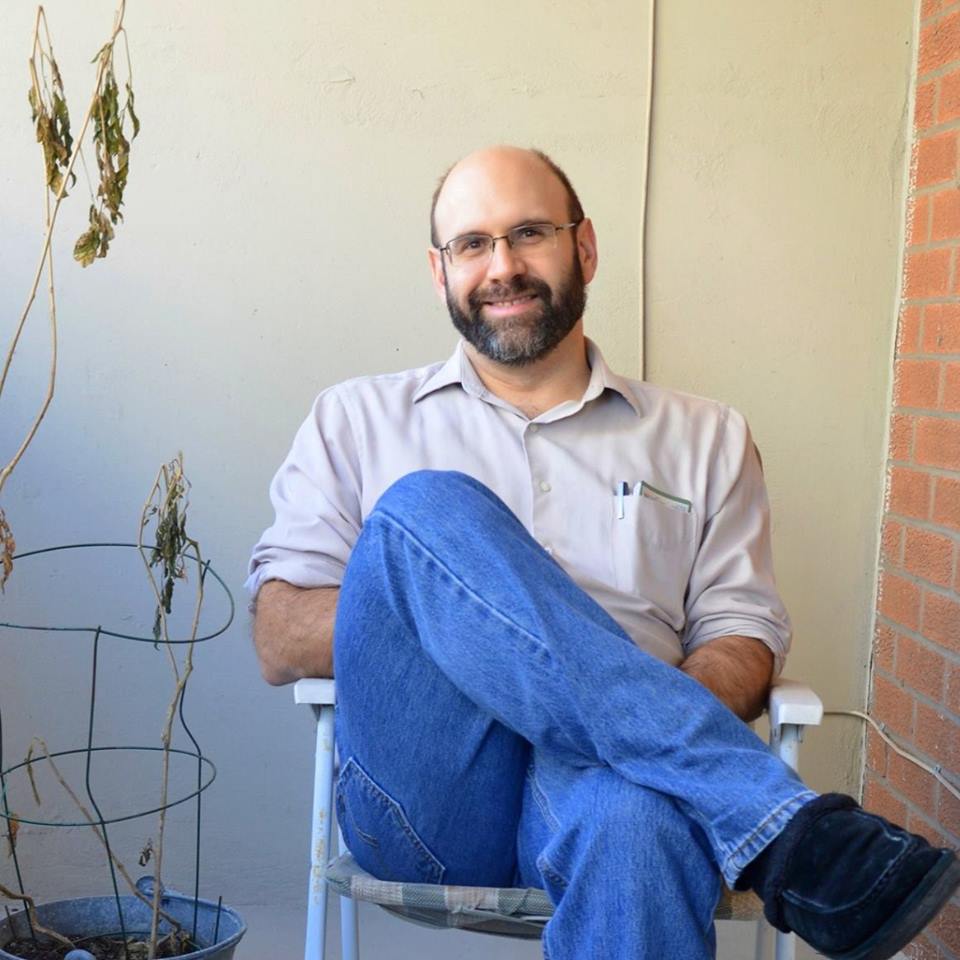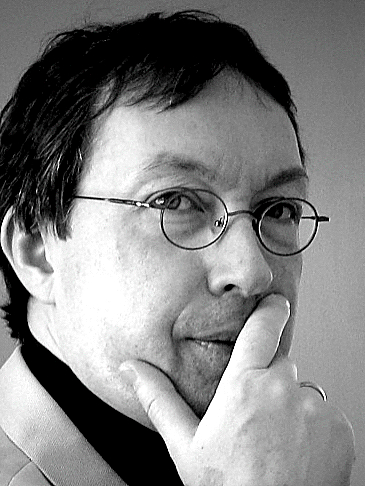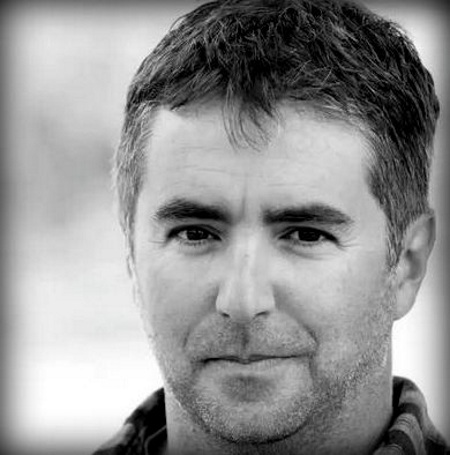
The thing I remember most about arriving in Spokane, Washington, at the end of August in 1991, to begin my MFA in Creative Writing, was the heat and the dust. I remember walking from the apartment in Browne’s Addition (where I was staying until the university residence opened, being put up by a kind soul who did not know me from Adam – like the dust, I drifted into his apartment on the hot currents of air, settled on his couch, and he generously let me stay – thank you Jeff Blaustone) to The Elk for a breakfast burrito the morning after I arrived. The heat and dust weighed down on me. I could feel it in the air, I could smell it deep within my nostrils, I could taste it on my tongue, and I like to believe I could hear it too.
Now all these years later, three good friends from back then are featured here in Numéro Cinq writing not about dust but dirt from the anthology, Dirt: A Love Story – Barbara Richardson (editor), John Keeble and Jeanne Rogers. Barb and Jeanne had already completed their first year in the program by the time I arrived, and John was a professor in the department. My fondest memories of all three of them are related to landscape (well, there was that one night in Jeanne’s caboose out at Loon Lake, but it’s probably best not to go there) and the journeys involved in reaching new landscapes.
On one occasion, Jeanne who had planned some quiet time alone in Cannon Beach on the Oregon coast in a small cabin she had rented by the ocean graciously offered me and my wife a ride there and back. We stayed closer to the town in the Oddball apartment, a last minute rental. During the day we walked the beach, enjoyed the views of the ocean, the mountains and rugged coastal outcroppings, the famous Haystack Rock or hiked the headlands with their panoramic views. Barb drove us to the Thoreau Conference in Missoula, Montana, where we attended workshops with Rick Bass and Simon Ortiz, heard an electrifying reading (his first in 13 years) by the late great Jim Harrison. More readings and panel discussions with environmentally concerned writers such as Richard Nelson, Marilynne Robinson, Terry Tempest Williams, William Kittredge, and Sandra Ciscernos amongst others. And John eventually led us to Alaska. His seminal non-fiction account of the Exxon Valdez oil spill encouraging me to persuade my wife (easily done) to go backpacking there for three months before returning to Ireland.
I owe a deep debt of gratitude to John. The two years I worked with him as my instructor and thesis advisor shaped me more as a writer and as a person than anyone else I can think of (and it needs to be said, he is one of the finest writers North America has produced, his superbly intricate fiction and non-fiction always socially and environmentally prescient.) I also owe so much to Barb and Jeanne too for their kindness and friendship. It was an extraordinary time for me, and those were extraordinary journeys we took. As for the Spokane dust, I can hear it still.
—Gerard Beirne
Introduction — The God of Dirt
.
F
or thousands of years, humans have looked to the heavens for inspiration and divinity. Looking to the heavens may be the greatest mistake we, as humans, have ever made. We project what we want onto the open skies, the blank distant blue. Whereas looking to the earth sends clear messages—intricacy, impermanence, solidity, interrelation, humility. You can’t fool dirt. Nor can you escape it. You can’t manipulate meaning as you can from the mirror of an empty sky. Dirt anchors us all in reality. And so we need to remember and relearn the ongoing, resonating divinity of dirt. As John Keats wrote, “The poetry of the earth is never dead.”
That poetry is everywhere. It comes in through all our senses. Green, gold, scaled, seeded, sour, shining, sneaky, squeaky, voluminous . . . Mary Oliver writes, “The god of dirt / came up to me many times and said / so many wise and delectable things, I lay / on the grass listening.” The essays in Loving Dirt are that listening. Remember the joyful freedom of splashing in a mud puddle? The thrill of climbing an eroded cliff? The artists, scientists and authors in Loving Dirt drag you outdoors, scuff your knuckles and muddy your feet. They make dirt live and breathe again.
“The first set of essays, “Land Centered,” returns dirt to its rightful place—as the crux of life in the experiences of people who are flagrant dirt fanatics. These writers revel in the fact that dirt is “magnificently humble.” Long may they reign. Then, armed with new appreciation, take a muddy fall into “Kid Stuff,” the second set of essays, which explores our early contact with dirt. Go ahead, these writers say, “major in mud pies.” Because the humbling, hallowed fact is that dirt is our mother. And she doesn’t call us inside at night in order to ignore her gifts.
“Dirt Worship,” the next set of essays, shows just how to get “that motherly feeling” on in adulthood. How to place your feet on the ground and your hands in the soil and claim your ancestry, your grand, mysterious inheritance. This centering in the land leads to curiosity about the good stuff under our feet. And so the fourth set of essays, “Dirt Facts,” offers insights into the masterful and largely ignored scientific processes within dirt, the “interesting secrets” that children and dogs, who may not understand, enjoy with all their hearts.
Lastly, the essays in “Native Soil” embrace the challenge of adoring seemingly unlovable ground—third-growth woods, weedy urban lots, overgrazed prairies—”the sort of land that desperately needs to be loved and protected, and rarely is.” These essays salute and defend our native soils as if they were life itself, which they assuredly are. “Humble” comes from humus, ground, and humilis, lowly. Humble outdistances pride. Humble whispers connective language, and waits when we don’t listen. By book’s end, you will recall the generous, wordless, irresistible divinity of dirt.
“That divinity says get filthy. Grab a shovel. Hike a ravine. Breathe a dust storm. Reek like old goat and sleep like Venus after a dirty long day. Relish dirt’s unbiased receptivity. Worship, if you will, the endless fecundity of soil. Or better yet, fall in love. Dirt makes a resilient astounding lover. Tireless. Generous. Unstoppable. And most often unthanked. Start thanking. Put your belly on the ground and say thank you. Wherever you are. Winter, spring, any season will do. Lie there saying thank you until all of your internal chatter and sophisticated notions and cogitative claptrap stop.
“While you’re down there, imagine every plant that has ever lived. Every seed that has dropped, every band of people, every fish in every stream, every hedgehog, every grasshopper, all the grasses of all the prairies on earth are still here. The trees. The elephants. Every single ant and albatross. You needn’t try to imagine it, it is so. Under your belly. The earth should be groaning under piles of its own dead life forms, but what a spacious, cleanly earth it is. Right beneath you lies a creative silence so vast it makes time stop.
“Walt Whitman, long gone from us, said, “Look for me under your boot-soles.” He meant it literally. This astonishing vanishing act to which we belong deserves consideration. And deep respect. Respect for the arbiter of this vast balanced nuanced productivity. Let God in heaven take care of the stars. We, along with the scientists, artists, and poets, are forever called to loving dirt.
— Barbara Richardson
Imago Ignota
.
M
y earliest memories of dirt come from when I was a young boy of four. We lived on a hill and during springtime I would combine the dirt with small stones and sticks and construct experimental earthworks to guide the water of the snowmelt into little lakes and dams. Sometimes a small stick would double as a boat, enter a rivulet, and careen downwards. I suppose it was mud I played with, dirt mixed with water. There were the mud puddles, too, the bane of mothers and a great source of pleasure for young people in galoshes who were fortunate enough to have dirt around them. I first lived in a small town in Saskatchewan and we had plenty of dirt in those days, all right.
There was the dirt I remember when I was not much older, a patch of it near the steps at the back of our house. I sat on the steps in the sunlight with a stick in my hands and drew in the dirt. I was brought to consider infinity, as I had lately been struck by the meaning of “The End,” and then by the question of what comes next after “The End.” This simple, rudimentary contradiction was a childish insight into the nature of things, and while my phrasing of the question has grown much more ornate, I can’t say that my understanding of its meaning has improved in the least. What strikes me as fascinating is that I was drawing a figure with my stick in the dirt while trying my hardest to unravel this matter. The question seemed to emanate from the dirt, radiating through the squared off head and querulous expression of the figure I had drawn. It said something about what I might see now as the classic fundament of elements . . . earth, water, air, and fire . . . but which then was merely the grounding sense of touch with a solid thing, holding the stick in my two small hands, touching one end of the stick to the dirt, and moving it to outline the rudimentary head while my mind went off toward the empyreal, sparking the imagination. It was an obscurity felt as inchoateness, an “imago ignota,” and it is important to consider the order in which those two things came: first, the grounding, and second, the sparking.
When I was eight, my family moved to Berkeley, California, where my father attended the Pacific School of Religion. There on the lavishly planted and somewhat unkempt grounds of the campus I found myself transfixed by a slope overgrown with dense bushes, surrounding a single, huge fir tree, which I watched during storms from our apartment window. The tree tilted, bent, and whipped in the wind. One spring day, I made my way to the tree by crawling beneath the bushes. Upon reaching it I found a tremendous gnarled root system clutching at the dirt. The brown needles that fell from the tree made a thick duff, eventually to be transformed into more dirt, and there were spider webs that held entrapped flies and a colony of sow bugs, which curled up into balls when touched. Those things were the grounding there. It was a potential, frangible detritus, found in a dark place, and, I thought at the time, safer than any other place I knew of, solitary and secret. I had to creep out the way I came, emerging covered with dirt and with cuts from the thorns and brambles.
My family moved to Southern California where I had a transfigurative experience with dirt. We traveled to Death Valley to camp for several Thanksgivings, a time of year when the desert was cool. We went with friends of my parents, the Sayles, for whom I recall having great affection, though now I know little about them, except that they were artifact collectors, and old enough to be my grandparents. They had no children. We camped in a place with a hot springs, which was near what seemed a vast plain stretching as far as the eye could see, but with very few plants growing on it. Instead, it was littered in places with small stones of agate, jasper, flint, opal, and obsidian which had been chipped by human hands. It was a stone flaking ground and we would walk along, traversing the flat with our heads down as we searched for artifacts, and I remember one I saw . . . a pink-colored piece of opalized agate. I bent to dig it from the dirt. It seemed presentational, an ensconced arrow point, and I can envision it still, the dirt framing the luminous stone. I lifted it to show it to Mr. Sayles, who touched his finger to the fine flaking on the point’s gently curved hafting and pronounced it to be a 2000 year old ceremonial or mortuary point.
Whether he was right or wrong, I have no idea. I do not possess the arrow point and I think now it was possibly ceremonial because of the ornateness of the hefting, but unlikely that it was 2000 years old. At the time, I knew nothing of the value of artifacts, and certainly I did not consider that the original makers, feasibly Panamint Shoshone, might wish to lay claim to them, and thus that what I was engaged in was a form of plunder. Though at age ten or eleven, I was at a time when my consciousness was dividing into what some hold as the signal stage of growing out of childhood, the nagual (familiarity with the non-ordinary) giving ground to the tonal (a fixation on the ordinary, the everyday), the possibility that what we were collecting came from a burial ground did not register, perhaps simply because it was not a part of the conversation among the people there . . . the Sayles, my parents, and myself. It would take Barry Lopez years later to articulate that for me. In his essay, “The Stone Horse,” he describes his encounter with a horse made of an outline of stones, a four hundred year old intaglio laid into sunburnt and sandblasted desert varnish, which is a patina of iron and magnesium oxides. He says, “. . . the few who crowbar rock art off the desert’s walls, who dig up graves, who punish the ground that holds intaglios, are people who devour history. Their self-centered scorn, their disrespect for ideas and images beyond their ken, create the awful atmosphere of loose ends in which totalitarianism thrives, in which the past is merely curious or wrong. . . . [But] I remembered that history, a history like this one, which ran deeper than Mexico, deeper than the Spanish, was a kind of medicine.”
From the experience of finding the arrow point in the dirt, misunderstood as it was, I developed one, sometimes useful habit, that of searching the ground when I walked, of being alert to what the dirt offered up, to the sparking that helped me make my way as an adult. This is how it is in Eastern Washington on the farm where my wife and I have raised our children and lived for forty years: deer carcasses, cow carcasses, a heifer practically disemboweled by her breech-born calf, all manner of carcasses going into the ground, raccoons, porcupines, mice, and gophers, flies and maggots eating the dissolving flesh, dust from taking the care to disk in the residual organic matter left after baling hay. It’s garden dirt made into soil, I suppose, chicken shit and dirt, cow patties and dirt, deer manure, convoluted moose droppings and dirt, snow and dirt, rain and dirt, dirt from dirt roads, dirt in the nostrils, in the cracks of skin, imbedded under fingernails, dirt storms, veritable clouds of dirt, great plumes of dirt blowing across the Pacific from the Far East, for nothing is strictly local. There was the stratospheric column of volcanic ash from Mount Saint Helens that covered our place in 1980 and floated around the world, this and more on ground covered by one of the largest floods known to the history of the world more than twelve thousand years ago. The ice dams broke apart at the end of the last glacial age and the resulting floods inundated hundreds of square miles from Missoula, Montana to the Pacific Ocean, covering portions of Idaho, Oregon, and much of Washington. Where we live there are fields where the once massive eddies slammed into the hills and turned, dropping their loads of dirt. Within sight of such fields there is basalt on the surface, known as scab rock, where the water raged, washing the dirt away.
It is interesting how the word, dirt, has undergone a nearly hundred eighty degree turn in meaning in our culture. The word is thought to emerge originally from Old Norse . . . drit . . . meaning excrement. The Oxford English Dictionary lists this first, “1. Excrement,” but there are other meanings, too, “2. Unclean matter, such as soils and any object adhering to it; filth, especially the wet mud and mire of the ground, consisting of earth and waste matter mixed with water. 3. Mud, soil; earth; mould; brick-earth,” and it adds the more metaphorical meaning, “4. The quality of being dirty or foul; dirtiness; foulness; uncleanness in diction or speech.” I have a copy of Webster’s Dictionary, dated 1911, which defines dirt as: “1. Any foul or filthy substance; excrement; earth; mud; mire; dust; whatever, adhering to anything, renders it foul or unclean.”
The change seems to have happened sometime in the last century. In 1927, Hermann Hesse published his novel, Steppenwolf, in its German edition and near the beginning of the book he has his willfully shabby and unkempt protagonist, Harry Haller, pass by a place “so shiningly clean, so dusted and polished and scoured so inviolably clean that it positively glitters. . . . Don’t you smell it, too, a fragrance given off by the odor of floor polished and a faint whiff of turpentine together with the mahogany and the washed leaves of the plants—the very essence of bourgeois cleanliness, of neatness and meticulousness, of duty and devotion shown in little things? I don’t know who lives here but behind that glazed door there must be a paradise of cleanliness and spotless mediocrity, of ordered ways, a touching and anxious devotion to life’s little habits and tasks.” Haller goes on to claim . . . undoubtedly ironically . . . that he is not being ironic.
The tension Harry Haller foresaw is out in the open now, for the world’s population, and its inventions, have increased exponentially while the earth’s dirt in its frenzied and fecund form has proportionately diminished. We’ve also come to understand very well the new dimension added to dirt. No longer is dirt always a thing that needs to be washed out like Lady MacBeth’s “spot,” made hygienic and sanitized. One does not think solely of one of a number of secretive, contagious killers, cholera, say, looping around a village in the mud and water, or E. coli poisoning from animal waste stirred into fields of salad greens. On the contrary, we’ve come lately to think we’ve grown excessively clean, that our immune systems require more contact with the minerals and myriad of microorganisms, which, if one were to dig one’s hands in the dirt one would come up hefting a load of the visible and invisible . . . earthworms, larvae, tiny insects, tiny snails, nematodes, and bacteria, frangible fossil matter, frangible sticks and leaves, carbon, and radioactive isotopes, some of which might contain the germs of yet unrealized cures. My wife and I have a dog that eats dirt every springtime, and a grandchild who adventures in it just as I once did, searching out his inchoateness and the seemingly random sparking. If only we could cease our plundering habits, the products of human invention which strain to drive the earth into utter exhaustion. We’re playing a fool’s game with our dirt, blindly transforming it “behind that glazed door . . . [into] a paradise of cleanliness and spotless mediocrity” through genetically modified crops and monoculture, herbicides, fertilizers, coal mining, petroleum extraction, and fracking, that dire, unthought out, and “awful atmosphere of loose ends in which totalitarianism thrives.”
—John Keeble
Sinking Down Into Heaven
I
am a Midwest farmer’s daughter and as such, no stranger to dirt—four hundred and fifty acres of it to be exact. In addition to growing sweet corn, field corn, alfalfa, oats and wheat, we raised dairy cows, beef cattle, pigs and sheep. The dairy barn took up the western section of land next to the woods. The steer barn, corncrib and hayloft claimed the eastern border near the creek. The sheep grazed on the northern edge close to the swimming hole and the pigs wallowed in the mud to the south. My bike and I were constant travelers on the gravel roads that connected the respective barns and outbuildings, and I’d be lying if I said that navigating those loose gravel roads on my black Schwinn with skinny tires was not a tricky endeavor that required Bandaids and Mercurochrome on a regular basis. I rode my bike from one end of the farm to the other, and when my legs grew tired, I high-tailed it over to the swimming hole. I ask you: what could be better than a hot dusty bike ride followed by a cool swim and a lazy sunbath? Often, as I lay atop my dry clothes, I imagined the earth spinning faster and faster, imagined myself clinging to the warm grasses for dear life so that the centrifugal force would not spin me off into the ethers. Other than my grandma’s house, there was no place I would have rather spent a summer afternoon.
When the sun neared the grove of trees in the west, I headed home to our well-worn, two-story white farmhouse, its wide front porch and spacious yard shaded by oak trees. Our family garden plot, sixty-feet by thirty-feet of fecund soil, ran alongside the fence that separated our side yard from the cow pasture and in it we grew everything imaginable: raspberries, strawberries, cantaloupe, tomatoes, cucumber, yellow squash, zucchini, acorn squash, green beans, sweet peas, lettuce, spinach, broccoli, rhubarb, green onions, white onions, carrots, potatoes, peppers and the best sweet corn known to man. Many afternoons found me on the front porch staring off toward the neighbor’s property on the far side of the creek while I snipped beans, shelled peas and daydreamed about the swimming hole, a permissible destination only after chores were completed. Much like the sunrise, chores began and ended each day.
My duties consisted of tending our garden—weeding, hoeing, thinning, picking and preparing the fruits and vegetables for farm-style, midday meals and evening meals we called supper. As farmers, we didn’t use the word dinner for the evening meal. To us, dinner meant Sunday dinner at noon. I never heard the word used in the context of an evening meal until I went to school, learned to read and discovered that Dick and Jane ate dinner in the evening. That’s also when I discovered that town people were not exactly like us country folk. But I digress. Preparing one noon meal and one supper each day for six hungry people didn’t begin to put a dent in all of the produce, so we spent numerous hot summer days canning, freezing and pickling the abundance.
Hundreds of cucumbers transformed into dill and sweet pickles. We put up row-after-row of canned tomatoes and peaches, the later bought from a peach farmer who lived down the county line road apiece. In the cool, dank cellar on shelves that lined the canning room, we placed clear Mason jars filled with round, peeled red tomatoes and peeled yellow peach halves, their crimson insides prime candidates for a Cezanne still life. We froze green beans, squash, raspberries, strawberries and tender sweet corn kernels that we carefully and laboriously removed from the cob using a metal and wooden device that looked like a medieval torture rack. We froze whole strawberry-rhubarb pies and put up jar after jar of my personal favorites: raspberry and strawberry preserves.
loved every part of the dirt, manure and water that went into creating our prolific garden. I also loved the dirt, manure and water that caked on the soles of my bare feet, which were often so dirty that they looked as if I were wearing short brown boots. I was nine years old the summer those dirty feet helped me rise from picking the low-to-the ground strawberries, stretch my back from having been bent over for so long, place my hands on my hips and wonder: How can town people be happy without loving a piece of land?
That evening at the supper table I posed that question to my father, a man who had more than once shared his regret about not completing college as had his two older brothers, who now wore suits and worked in cities. From time-to-time he had also wondered aloud if he had made the right decision in remaining a farmer instead of finding a more sophisticated occupation. As he pondered my question, his normally steel blue eyes turned a bright blue and his jaw popped as he chewed—sure signs that he was getting riled up.
“You know,” he said, “I was a kid during the Great Depression. Town people lost their jobs. No money. No food. Nothing. Those scrawny town boys pulled up to our farm hungry. And guess what?” He stopped talking. A slow grin spread across his face. “We gave ‘em food. For once they needed something from us. That’s what having land means.”
In the autumn of my sixth grade school year when I was ten years old, my grandma died, and because I adored her more than life itself, everything changed for me that year, including, and especially, my relationship with dirt and the land. True to those times and that place where she lived in southern Illinois, in a small town cradled between the Mississippi River to the west and the Wabash River to the east, there near the Kaskaskin River in Grandma’s small town, my father and his siblings placed her open casket in the parlor beside the piano for a wake that lasted three nights and three days. It was my people’s time-honored manner in which to pay respects and say farewell. It gave us a few days to become accustomed to the idea of her no longer being with us. It gave us time to be with her body a little longer, time to say goodbye. For three days running, every time I passed by the parlor I glimpsed Grandma lying there in her dark blue church dress. A few times I could have sworn I heard her playing the piano and singing one of her favorite hymns. One time I even thought I heard her familiar chuckle followed by her dentures clacking as she said, Oh Jeanne—you do beat all.
On the fourth day they moved Grandma’s casket to the church, but it wasn’t until after the memorial service when the pallbearers closed the casket that the realization hit me: I would never see her again. We followed the hearse to the cemetery and as we stood beside the open grave, the thought of Grandma being trapped underneath six feet of dirt made me feel crazy with rage. I became hysterical. I screamed, cried, kicked and carried-on something fierce, all to no avail. Nothing could change the ordering of that day. Despite my protests, Grandma’s coffin was lowered down into the earth and covered with shovelfuls of dirt, which to my ten-year-old way of thinking, had completely and utterly betrayed me. I crossed my arms over my chest and declared my relationship with dirt and the land finished, forever.
*
Fifteen years later as I watched my two preschoolers play in the back yard, John Prine’s newly released “Please Don’t Bury Me” came on the radio. The lyrics made me feel as though he shared my aversion to the practice of burial. On that afternoon, I adopted Prine’s contagious melody and goofball lyrics as my theme song regarding the thought of being six feet under for eternity.
For Mother’s Day my daughters’ preschool teacher sent home a yellow rose plant and when its blossoms began to fall onto the kitchen countertop, I planted it haphazardly in a sunny spot in the front yard. To my surprise it flourished. By summer’s end, after several enthusiastic days of planting other young rose starts, we had a burgeoning rose garden—reds, apricots, yellows, pinks and whites. For the first time in many years I felt great pleasure as I pushed the shovel down into the earth and inhaled the smell of moist, lush soil.
I took off my gloves, rested one knee on the ground and lingered, my bare hands carefully arranging the soil around the base of each plant, tending to their needs much like I cared for my young children.
The years passed, my daughters left for college, and as I moved from one state to another and from one house to the next, I became obsessed with annuals and perennials. Without consciously planning to do so, in the yards of the new houses, I recreated my grandmother’s flower garden: pink climbing roses, purple butterfly bushes, catmint, lime green hydrangeas, lavender, yellow day lilies, red carpet roses, white snap dragons and multicolored hollyhocks. Ushered in by the beauty of the roses, my passion for dirt and its works had returned. However, Prine’s catchy tune remained my theme song regarding burial; I doubted that would ever change.
Coming face-to-face with death as an adult gave me the unexpected gift of freedom. Life handed me a three-year crash course during which I lost two close family members and discovered a cancerous lump in my breast. Surgery, followed by seven weeks of radiation that turned my breast an angry, painful red, gave me ample time to ponder my mortality and last wishes. Oddly enough, after living in close proximity with death for three years, I no longer feared it. Death and I had taken time to get to know one another. I felt at peace knowing that I, like my two family members, would one day return, in some capacity, to the earth. My loved ones chose cremation. My uncle’s ashes were sprinkled from the deck of a boat into the San Francisco Bay. My favorite cousin’s ashes were sprinkled in a meadow off a California back road near Lake Tahoe. For my own going-away party, I decided I wanted “Please Don’t Bury Me” played, and even though I’ve always imagined my ashes being sprinkled into the Pacific Ocean from a beach on the Oregon Coast, a different possibility came to me not long ago.
On a hike near my home a vast field of blue camas lilies stretched out before me. Have you ever seen their blue tips swaying in a morning breeze? The sea of periwinkle was divided only by a narrow dirt path. It wasn’t a tall mountain that I traveled to. No need for hiking boots or rappelling ropes. The blue field did not appear on a postcard you would mail home from your hotel saying, This is where we visited today. No one sold jewelry, photos, hot dogs or candy—not even—as you will probably be surprised to hear, expensive bottled water. I did not need a guide, so safe was my passing there. From the main road traveled by cars, I simply walked down the narrow dirt path through the blue lilies, every now and again feeling the moisture of the marshland rise up around my feet. How I loved that oozing up and over the sides of my shoes. How I loved that feeling of sinking down—not dangerously down, mind you—but sinking down just far enough to know that I too was planted, or could be, if I stayed long enough, in that patch of marshland dirt. How I loved that sinking down on the flat dirt path into blue heaven.
—Jeanne Rogers
You can listen to a radio interview here with Barbara Richardson and Jeanne Rogers after a reading with John Keeble in Ashland, Oregon.
Barbara Richardson‘s two novels, Guest House and Tributary, reflect her ardor for life in the West. Tributary won the Utah Arts 15 Bytes Award and the 2013 Utah Book Award in fiction. Her 2015 anthologies, I Am with You: Love Letters to Cancer Patients and Dirt: A Love Story
rely on the power of collaborative storytelling to open hearts and minds. She has worked as a landscape designer in Oregon, Utah and Colorado. She now writes and edits in Kamas, Utah.
John Keeble is the author of five novels, including Yellowfish and Broken Ground, and 2013 saw the publication of The Shadows of Owls. He is also the author of a collection of stories, Nocturnal America, and of a work of nonfiction, Out of the Channel: The Exxon Valdez Oil Spill in Prince William Sound. He is a professor emeritus of Creative Writing and English at Eastern Washington University. keeblefiction.com
Jeanne Rogers’ memoir, Changing Course, chronicles her leap from land to sea while working as a steward assistant on an oil tanker. Her 2013 poetry collection, Through the Cattails, celebrates the fragile interconnectedness of human lives. Her short story, “Instructions for a Bed Sheet Parachute,” was awarded best of collection in the 2013 anthology Detour. Her work has also appeared in Willow Springs, The Bellingham Review, Calapooya Collage, The Raven Chronicles and Poets West, among others.



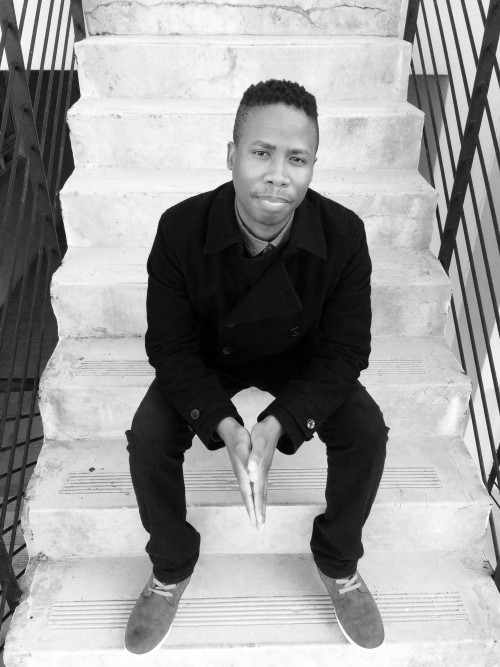






 Jonathan Marcantoni (center); Clockwise from top left: I. C. Rivera, Ricardo Félix Rodríguez, Nelson Denis, Rich Villar, David Caleb Acevedo, Charlie Vázquez, Chris Campanioni, and Corina Martinez Chaudhry.
Jonathan Marcantoni (center); Clockwise from top left: I. C. Rivera, Ricardo Félix Rodríguez, Nelson Denis, Rich Villar, David Caleb Acevedo, Charlie Vázquez, Chris Campanioni, and Corina Martinez Chaudhry.
 David Caleb Acevedo (San Juan, 1980). Writer, painter and translator. His books include Desongberd, Cielos negros, Diario de una puta humilde, and Hustler Rave XXX: Poetry of the Eternal Survivor. He is pansexual and lives with his husband and three adorable cats.
David Caleb Acevedo (San Juan, 1980). Writer, painter and translator. His books include Desongberd, Cielos negros, Diario de una puta humilde, and Hustler Rave XXX: Poetry of the Eternal Survivor. He is pansexual and lives with his husband and three adorable cats. Corina Martinez Chaudhry was born in New Mexico but has lived in California most of her life. She grew up in the San Joaquin Valley throughout her high school years, but then made the transition to Southern California where she now resides. Her maternal grandparents were from Chihuahua, Mexico; however, her grandmother was half Basque (Spanish/French). Her paternal grandparents were of Mexican and Native American descent. She graduated from Vanguard University Magna Cum Laude with a bachelor’s degree in business and a minor in English. In addition, she has completed a Water program through the California State University of Sacramento, alongside a Management Certification Program through Pepperdine University, and currently manages The Latino Author Website.
Corina Martinez Chaudhry was born in New Mexico but has lived in California most of her life. She grew up in the San Joaquin Valley throughout her high school years, but then made the transition to Southern California where she now resides. Her maternal grandparents were from Chihuahua, Mexico; however, her grandmother was half Basque (Spanish/French). Her paternal grandparents were of Mexican and Native American descent. She graduated from Vanguard University Magna Cum Laude with a bachelor’s degree in business and a minor in English. In addition, she has completed a Water program through the California State University of Sacramento, alongside a Management Certification Program through Pepperdine University, and currently manages The Latino Author Website. Ricardo Félix Rodríguez (Sonora, México 1975). Writer and psychologyst. His books include The surreal adventures of Dr. Mingus, Asgard: a Saga dos nove reinos, There is No Cholera in Zimbabwe, and The Other Side of the Screen (contemporary writers of Poland).
Ricardo Félix Rodríguez (Sonora, México 1975). Writer and psychologyst. His books include The surreal adventures of Dr. Mingus, Asgard: a Saga dos nove reinos, There is No Cholera in Zimbabwe, and The Other Side of the Screen (contemporary writers of Poland).





















 Cynthia Flood
Cynthia Flood

